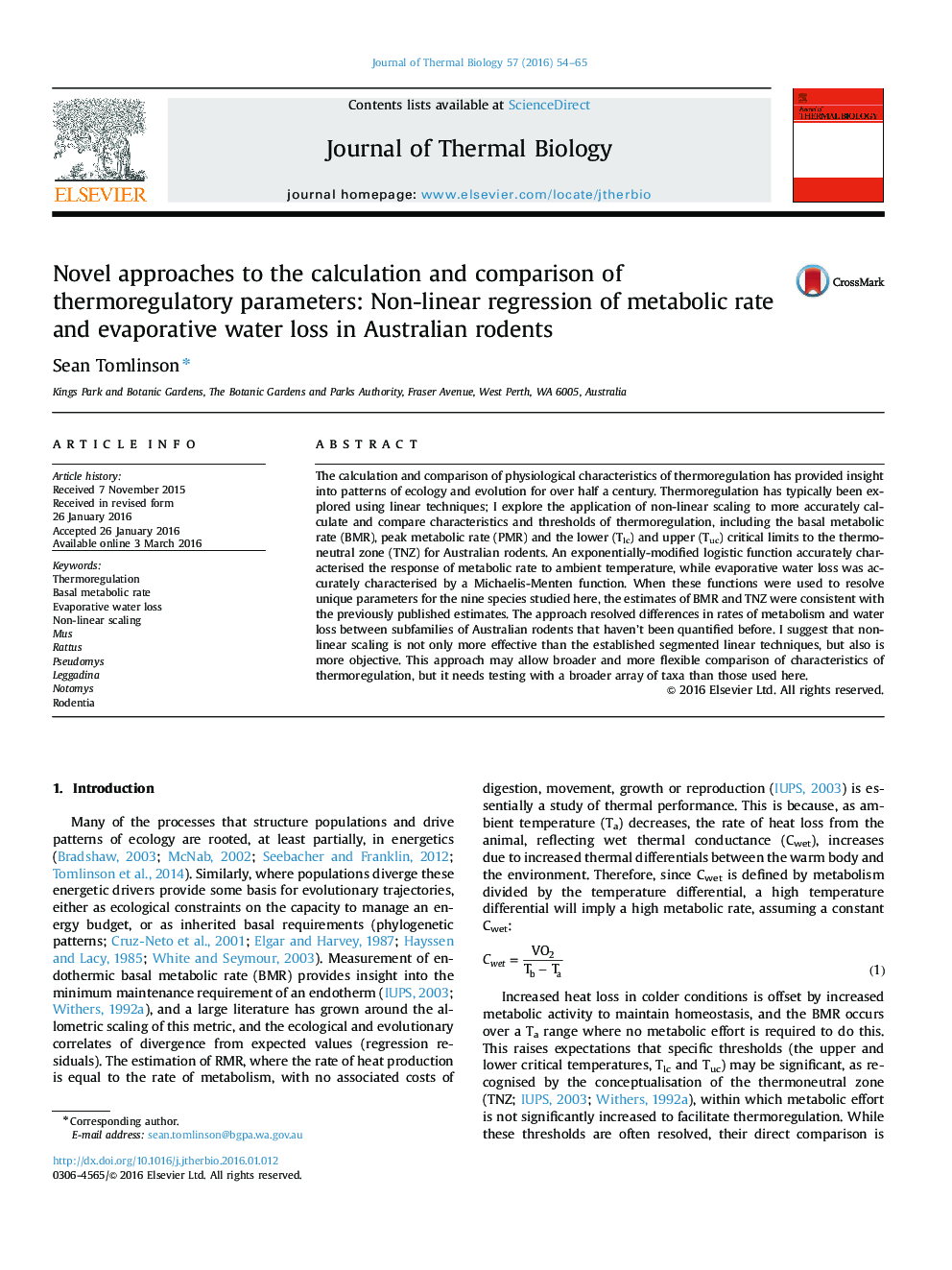| Article ID | Journal | Published Year | Pages | File Type |
|---|---|---|---|---|
| 2842723 | Journal of Thermal Biology | 2016 | 12 Pages |
•Thermal performance of VCO2 and EWL are best described by logistic functions.•Nonlinear regression is as accurate as linear regression, resolving more parameters.•Rodents introduced to Australia have higher BMR and PMR than most natives.•Interspecific comparison is facilitated more easily than by linear approaches.
The calculation and comparison of physiological characteristics of thermoregulation has provided insight into patterns of ecology and evolution for over half a century. Thermoregulation has typically been explored using linear techniques; I explore the application of non-linear scaling to more accurately calculate and compare characteristics and thresholds of thermoregulation, including the basal metabolic rate (BMR), peak metabolic rate (PMR) and the lower (Tlc) and upper (Tuc) critical limits to the thermo-neutral zone (TNZ) for Australian rodents. An exponentially-modified logistic function accurately characterised the response of metabolic rate to ambient temperature, while evaporative water loss was accurately characterised by a Michaelis-Menten function. When these functions were used to resolve unique parameters for the nine species studied here, the estimates of BMR and TNZ were consistent with the previously published estimates. The approach resolved differences in rates of metabolism and water loss between subfamilies of Australian rodents that haven’t been quantified before. I suggest that non-linear scaling is not only more effective than the established segmented linear techniques, but also is more objective. This approach may allow broader and more flexible comparison of characteristics of thermoregulation, but it needs testing with a broader array of taxa than those used here.
